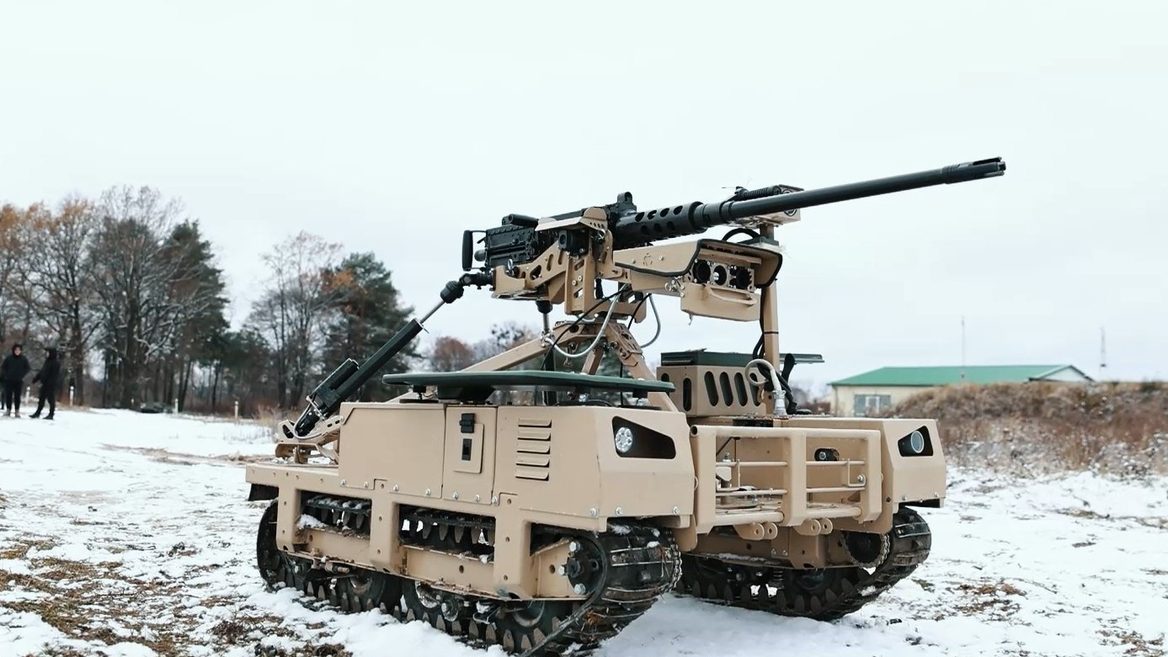Developed by Bravo Dynamics under Ukraine’s Brave1 innovation cluster, Phantom 3.0 is a ground-based mesh-network communication system for Unmanned Ground Vehicles (UGVs). Designed specifically for battlefield realities—no reliance on aerial relays that are easily detected or jammed—it instead uses interconnected ground nodes to ensure stable command-and-control links, even under heavy electronic warfare (EW) pressure (en.defence-ua.com).
At these heights Phantom sits within a rich armory of EW responses—Himera jam-resistant mesh radios, Pokrova spoofing systems, dome and mobile EW jammers (e.g., Dandelion, PARASOL), and signal intelligence detectors (e.g., Plastun, Azimuth, Chuika) (Українська правда, rubryka.com, Wikipedia). Together, they form layered protection and enable secure, especially now that Starlink is opting out the battlefield due to political pressures.
Frequency Band & Range
- Frequency coverage: 150 MHz to 1.6 GHz—a broad span covering VHF, lower and mid-UHF bands. This allows flexibility: lower frequencies penetrate obstacles and foliage better, while higher frequencies carry more data (en.defence-ua.com, united24media.com).
- Adaptive FHSS (Frequency-Hopping Spread Spectrum): Transmissions rapidly hop across frequencies in pseudo-random patterns, making jamming and interception far more difficult. Ideal under EW (en.defence-ua.com, PG SLOT).
- Distance: Up to 80 km coverage along the frontline, achieved by chaining ground nodes so that remote UGVs relay data through several hops back to the operator station (en.defence-ua.com, united24media.com).
Covering an 80 km front with ground nodes means that operators can maintain continuous comms across long, contested stretches without needing airborne relays. In Ukraine’s rugged, forested, and often urbanized terrain, this avoids the detection and targeting risk drones or balloons pose. Given today’s front shape and EW density, that spec aligns with real tactical distances (Kupiansk–Svatove, Kramatorsk–Sloviansk, much of Avdiivka–Pokrovsk are of this size).
Mesh latency is roughly: base processing + per-hop delay. Open tests/whitepapers report figures like ~10 ms baseline + ~1 ms per hop (USAF / mesh tests) — though real tactical radios and FHSS implementations vary. That yields approximate one-way latencies:
- 80 km (≈8 hops) → ~18 ms.
- 150 km (≈15 hops) → ~25 ms.
- 200 km (≈20 hops) → ~30 ms.
That’s still acceptable for most teleop tasks (telemetry + low-latency command), but keep in mind effective control depends on throughput and packet loss as much as raw ms. Every hop is a potential failure/jamming point.
Using 10 km spacing between each node (mid case) and simple latency model (10 ms baseline + 1 ms/hop as stated before), and per-hop survival scenarios:
- 80 km → ~8 hops → latency ≈ 18 ms → high end-to-end survivability if per-hop p≥0.99.
- 150 km → ~15 hops → latency ≈ 25 ms → if per-hop p=0.99, end-to-end ≈ 86%; if p=0.98, ≈ 74%.
- 200 km → ~20 hops → latency ≈ 30 ms → if p=0.99, end-to-end ≈ 82%; if p=0.98, ≈ 67%.
(These examples show the compounding fragility and latency growth that motivates an 80 km design point.)
Why Mesh and Not Airborne Relays? In a nutshell:
- Less detectable: Ground nodes are smaller, mobile, and camouflaged.
- Resilience: If one node is destroyed or jammed, the mesh reroutes dynamically—self-forming, self-healing network topology (roboticstomorrow.com, mssdefence.com).
- Terrain adaptation: Lower-frequency signals (150–400 MHz) propagate better in non-line-of-sight (NLOS) conditions—through trees, buildings, undulating terrain—key for ground robots (roboticstomorrow.com, mssdefence.com).
EW Threats and Countermeasures
Russia fields EW systems like the R-330Zh Zhitel, sweeping 100 MHz–2 GHz to jam GPS, radio links, UAV control signals, and satellite comms (Wikipedia). They also operate directional and omnidirectional jammers, backpack and mobile units saturating the spectrum (Українська правда, Wikipedia).
Phantom combats this through:
- Adaptive FHSS, hopping hundreds of times per second.
- Modularity: Nodes can be swapped or repositioned quickly; antennas adjusted for directionality or power control (Українська правда, mssdefence.com, PG SLOT).
- Spectrum awareness: Operators can monitor EW activity, avoid heavily jammed frequencies, and tailor mesh routing accordingly: a feature almost impossibile to achieve at this price tag (mssdefence.com, Українська правда).
Broader Ukrainian EW Ecosystem
Phantom sits within a rich tapestry of EW responses—Himera jam-resistant mesh radios, Pokrova spoofing systems, dome and mobile EW jammers (e.g., Dandelion, PARASOL), and signal intelligence detectors (e.g., Plastun, Azimuth, Chuika) (Українська правда, rubryka.com, Wikipedia). Together, they form layered protection and enable secure, especially now that Starlink (so far the omni-present and most reliable internet RF-physical link on the battlefield) is opting out the battlefield due to political pressures.




